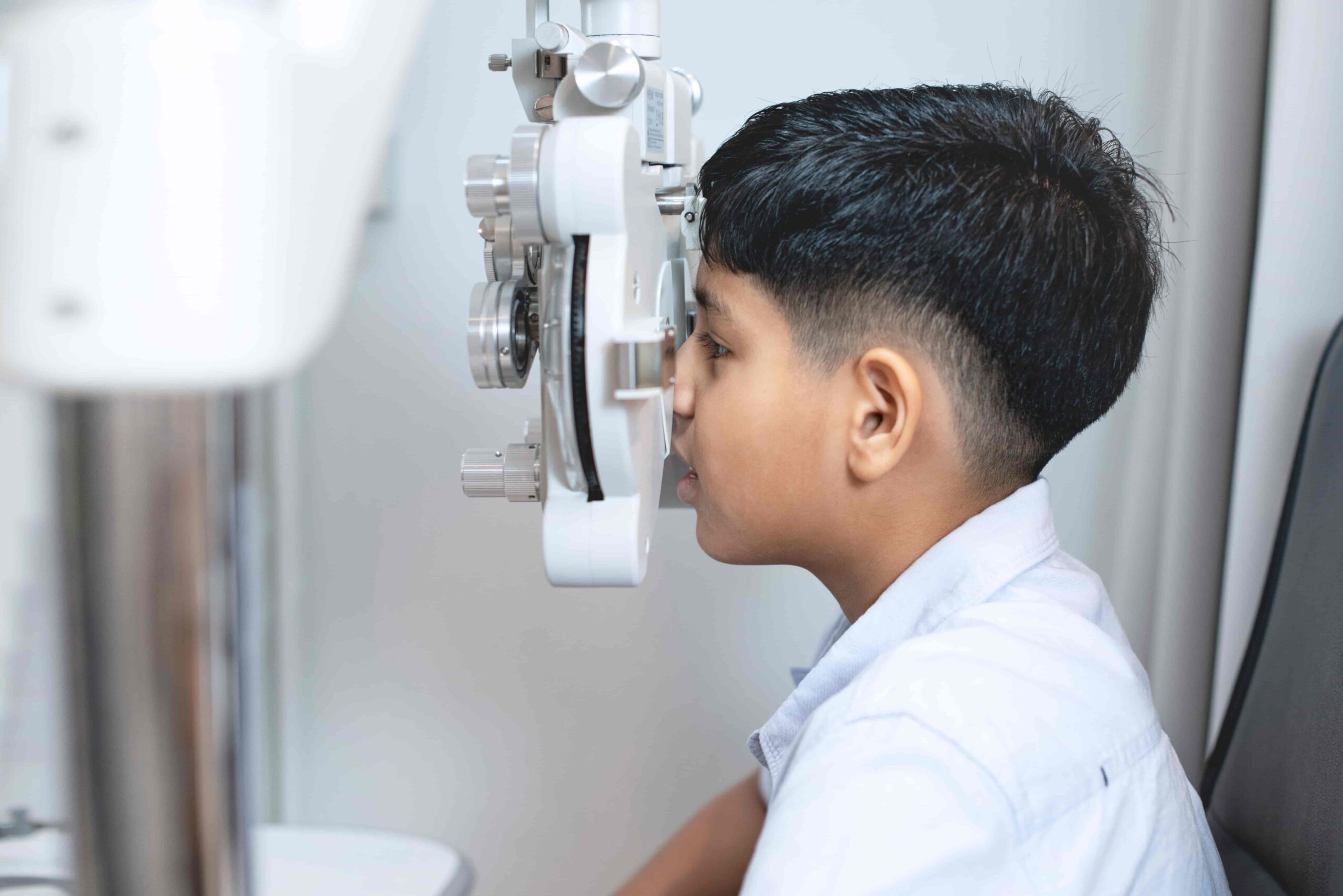You are now being directed to a third party website. Please note that this website is for convenience of the user. spectacularkids is not collecting, storing, or accessing any personal data of the user, and all the information collected, stored, and accessed herein is with the third party https://myeyedoctor.in/ website. You expressly consent to share all your details with https://myeyedoctor.in/

Caring for your eyes and vision are important parts of a healthy lifestyle.
There is a big difference between an eye exam and a vision screening.
Visual screening is a basic procedure that is generally performed by a pediatrician or a school nurse. According to the American Eye-Q survey, visual screenings tend to miss 95% of the vision abnormalities among children.
A visual screening aims to identify poor vision or eye problems that may lead to progressive decline or loss of vision. It can be performed quickly without the need for specialized equipment.
An eye exam is a comprehensive assessment of an eye that can facilitate the identification and diagnosis of vision problems. It is a detailed check-up of eye health.
Children and older adults usually require an eye exam for detecting vision problems, poor vision, and blindness.
This checks the shape and color of the eyes and the pupils. The pupils are also checked for their reaction toward light.
This test checks the reading ability. It asks the children to identify some shapes or letters from a distance. Covering one eye at a time and reading can show visual disorders in each eye separately.
This method uses a special camera to identify refractive errors and other abnormalities. This is an easy-to-use and automated procedure.
The visual screening uses only charts at a distance. It may neglect problems of near vision and eye movement disorders. An incomplete visual screening can give a false sense of security and delay the detection of various eye diseases.
If a simple visual screening detects any problems, you will be most likely referred to an ophthalmologist for a complete eye examination.
An ophthalmologist or optometrist performs eye examination for detection and treatment of eye problems. They will diagnose your eye or vision problem to provide a necessary treatment.
Visual screening is essential for the eye health of your child. An eye exam is much more detailed than a visual screening and includes the following:
Unlike visual screening which takes merely 5 to 10 minutes, a comprehensive eye examination is performed for at least 30 to 60 minutes.
A healthy vision is important to take in the world around you. Visual screenings are quick and easy to detect certain visual disorders. They cannot be considered a substitute for comprehensive eye examinations. Your child still requires eye exams, no matter the results of the school-based visual screening. Regular eye exams by an optometrist or ophthalmologist are necessary to protect your vision and keep your eyes healthy. Only ophthalmologists have the expertise to properly and reliably conduct these screening tests and then assess the results with accuracy.